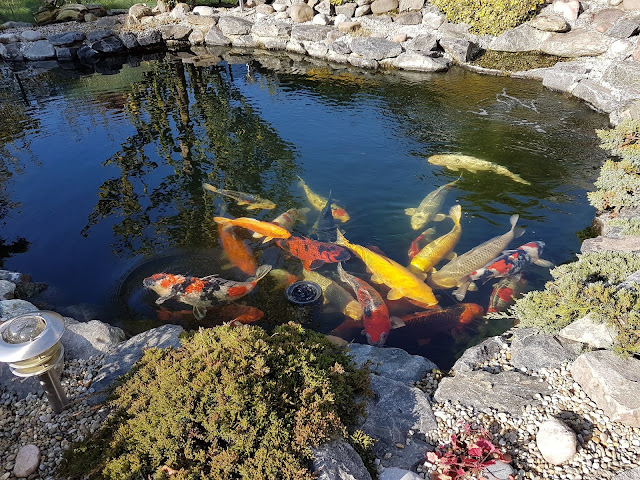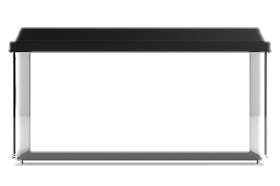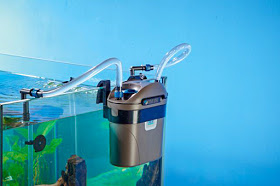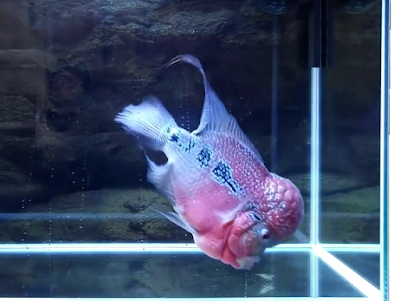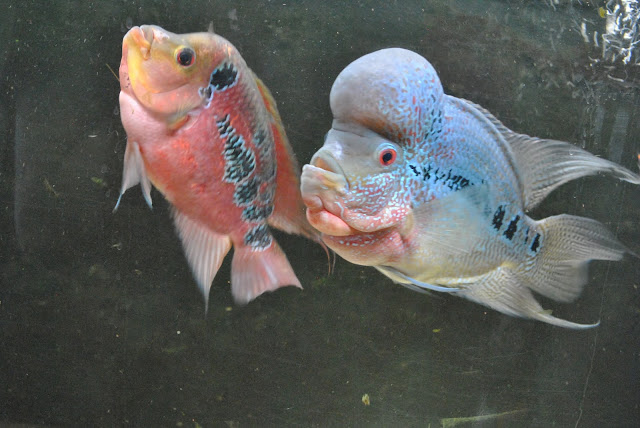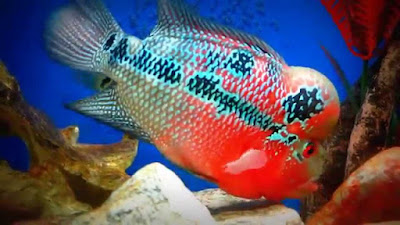Flowerhorn is a beautiful fish that has very impressive behavior, tone and totally unusual appearance. Flowerhorn cichlid is a hybrid of fish that incorporates as a cichlid family with a beautiful look and strong characteristic, it is also good and prolific. I can bet that the Flowerhorn fish will become your favorite one.
About Flowerhorn
As an exotic fish, the flowerhorn is a hybrid cichlid fish . It was created by crossbreeding cichlids from Central America by a man in the early 1990s. Started in Malaysia and Taiwan. The four main types are Zhen Zhu, Golden Monkey, Kamfa and Golden Base or Fathers. Different strains exist within these types. And the most famous type is called the Red Dragon Flowerhorn. Cross-breeding has made Flowerhorn fish available worldwide.
Things you should Know
Flowerhorn cichlid is a large fish with compact body, it can reach up to 30 cm (11.81 inches) and may grow even bigger. Intensive breeding has created a very peculiar fish that becomes really famous and relatively common in the last couple of years. In addition, breeders continue to improve the qualities of the fish with the focus on bigger bumps on the head, new and better colors, wider body and fins, more peculiar black marks on the body without the use of chemical and artificial factors. For the importance of appearance, a good Flowerhorn should follow a standard that defines different aspects of its body.
(i)General body
the body of the fish should be oval and thick, with the whole stomach and abdomen. Some new variants still have a more rounded shape.
(ii)Hump
The hump on the forehead must be large and well proportioned to the size of the fish.
(iii)General coloring
The most common flowers have a predominant red color, in any case each color must be bright, clear and well defined.
(iv)Scales
The whole body should be covered with blue scales or light green.
(v)Black marks
It is important that the marks are thick and well defined, this is one of the main characteristics of Flowerhorn, anyway some new varieties do not give them too much importance.
(vi)Ailerons
The tails and fins must be widely spread most of the time.
Required Tank
Due to the large size they can reach, Flowerhorn needs a large aquarium with plenty of free space for swimming; A 200 liter tank (52.83 US gallons, 43.99 imperial gallons) is the minimum you can offer to an adult fish to let it live healthily.
Water Conditions
It is a very strong fish and can live in different water conditions without problems, in any case it is important to provide a temperature between 25 ° C (77 ° F) and 30 ° C (86 ° F); The pH value is also important because the acidic water can soften the colors of the fish and make them sick, the ideal condition is a light alkaline water, with a pH between 7 and 8. In addition, it is necessary to avoid the sudden variations of temperature and chemical values, as they can make Flowerhorn more susceptible to diseases such as bacterial attacks.
Cycling
Cycle your tank Before adding any fish.The nitrogen cycle (also known as the nitration cycle) is the process that breaks toxic nitrogen waste products in an aquarium into less harmful components. For this cycle to develop, beneficial bacteria that feed on these waste products need to grow in the aquarium's filter system. Introducing fish to an aquarium without a healthy nitrogen cycle in place is a bad idea buildup of waste chemicals can put major stress on the fish, even potentially killing him. Thus, cycling is something that every new aquarium owner needs to do to ensure the health and safety of his/her fish.
Filtration
Filtration of water is very important because this large fish produces a lot of refusals that end up increasing the levels of nitrite and nitrate in the water. You can choose the internal and external filtration, although the second is better to leave more space for the fish. The biological part should work properly, so make sure you have a well-activated aquarium before housing a Flowerhorn cichlid.
Decoration
To make your Flowerhorn fish happy, you can put some aquarium decoration like coral, rock or small stone that is usually used to decorate the aquarium. The Flowerhorn Cichlid fish will play the stone and will make your pet feel comfortable and stay healthy.
Feeding
Flowerhorn fish need a living food integration to be healthy and fit. Their diet can include live food, frozen food and ordinary fish dry food. The living food should be of good size, or the fish would not notice it, earthworms and large worms of meal or worms are accepted; in addition you can give small fish, Poecilia reticulata could be a good choice since the high number of fry they save monthly. Remember to feed all the live foods you choose, and in the case of live fish, make sure they are in good health.
Frozen food
Frozen food is another good solution, especially when you do not have one. Young cormorants usually eat chironomus, prawns and other frozen foods, while older ones can not notice them. In their place you can offer frozen fish for human use, you have an excellent choice, anyway if possible get freshwater fish and avoid sea fish. Live and frozen foods can pollute the water, so make sure that Flowerhorn eats all donated food in 5 minutes maximum, in case of rest, remove them quickly; For this reason, it is best to have an aquarium set up that allows you to clean quickly without the need to move objects.
Dry fish food
Standard dry fish food is a good complementary option, especially if it is of good quality. You can find special foods produced for cichlids that are usually made of large pellets like Flowerhorn.
Feeding Time
A flowerhorn cichlid should be fed twice a day, Every day. Anyway be careful with the amounts and avoid overfeeding it. Reducing the amount of food especially if it is really rich in nutrients.
After feeding
You should keep the bottom of the tank clean of debris. You must clean the bottom while you change the water. Uneaten foods can damage the health of the fish. You should take out the food when you see it at the bottom.
Water Change
Water change will provide oxygen as well as remove nitrates and phosphates from the water. Replace 25 - 50% of the tank water with fresh water at least once a month to keep the tank clean and the water at a high quality.
Breading
Breeding Flowerhorn is quite easy, especially when they have reached the length of 10 cm - 12 cm (3.94 - 4.72 inches). The anal pore of the fish is V-shaped in males and U-shaped in females. In addition, females tend to have a smaller hump when they are adults.
Being cichlid their reproduction may be similar to that of cichlasoma. The female lays eggs on a flat surface, like a stone or an aquarium glass, and takes care of them. While the male moves away the other fish. After 3or4 days, the fries came out and the parents take-care of them by moving to safer hiding places. You can feed them with just chopped shrimp and other specific foods for the fry.
Reproduction is not so easy because the female can be easily stressed or worried and ends up eating her eggs. Anyway if the environment is calm and the parents are in good health.
LEAVE A COMMENT
Is this post helps you ?
Please Let Us Know By LeVing A Comment Yes Or No.
Or If you think thear was any problems or any wrong information Please help us by leaving a comment.
If you like our post please shear it with your frainds...
😊 Shearing is Caring 😊










